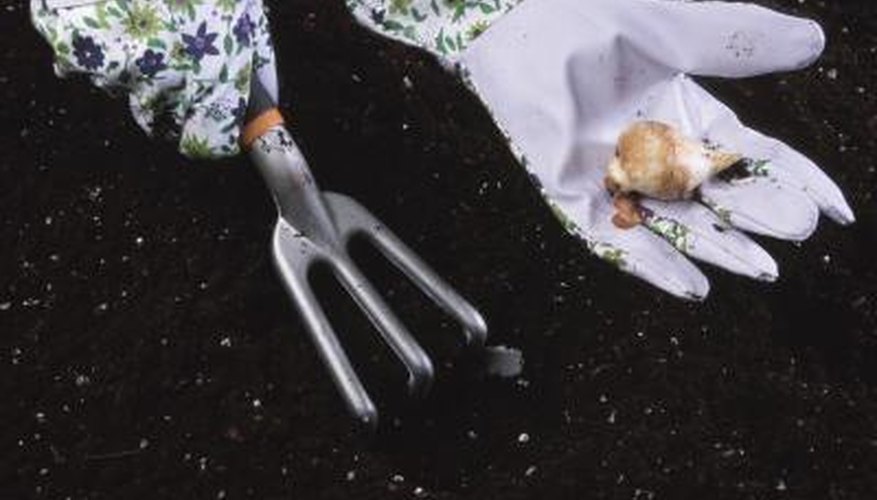Although not true crocus, the autumn crocus (Colchicum spp.) bears its large pink flowers in very early to mid autumn without any leaves present. The slender leaves emerge after the flowers and persist until the following spring when they finally wither away.
Time Frame
Dig up and transplant autumn crocus bulbs (technically called corms) in summer after their leaves naturally yellow and wither. Depending on climate, this occurs anytime from very late spring to midsummer. Do not lift bulbs when leaves grow since it may cause the leaves to abort and no food would be made to replenish the bulb for flowers next fall.
Considerations
Mark the location of the autumn crocus bulbs as the flower fade. Use a wire irrigation flag, wood stake or other durable marker, so you know precisely where to dig and find the bulbs next summer. The bulbs multiply over the years so when you dig to gather the bulbs, don't expect to find only one large bulb -- there will be a small clump of variously sized bulbs with a tangle of bottom roots.
Replanting
Replant the bulbs at the same depth they previously grew as soon as possible. This allows the bulbs to remain dormant over the summer and to re-establish their roots. The bulbs begin to emerge and elongate the delicate flower tube and bud in late summer. You want the bulbs in the ground so you don't disrupt their natural flowering time. Plus, digging up autumn crocus bulbs too late in summer or early fall risks severing the elongating flower tubes in the soil and not having any flower display.
- Replant the bulbs at the same depth they previously grew as soon as possible.
- Plus, digging up autumn crocus bulbs too late in summer or early fall risks severing the elongating flower tubes in the soil and not having any flower display.
